Some altcoins, including Bitcoin and AVAX, have started to correct after the bull momentum that drove last week’s rally to year-to-date highs began to fade. What are the critical support and resistance levels to watch out for? Crypto analyst Rakesh Upadhyay examines the top 10 cryptocurrencies to find out.
An overview of the cryptocurrency market
cryptocoin.com As you follow, Bitcoin has been consolidating around $23,000 for the past few days. The next big question plaguing investors is whether the rally is over or whether Bitcoin continues to recover. The strong Christmas rally in Bitcoin has made several analysts bullish in the short term. They predict that Bitcoin will expand its upward move and reach $25,000 or even $30,000. But over the longer term, analysts seem divided. Economist Lyn Alden says Bitcoin could face ‘significant danger’ in the second half of 2023 as liquidity risks increase.
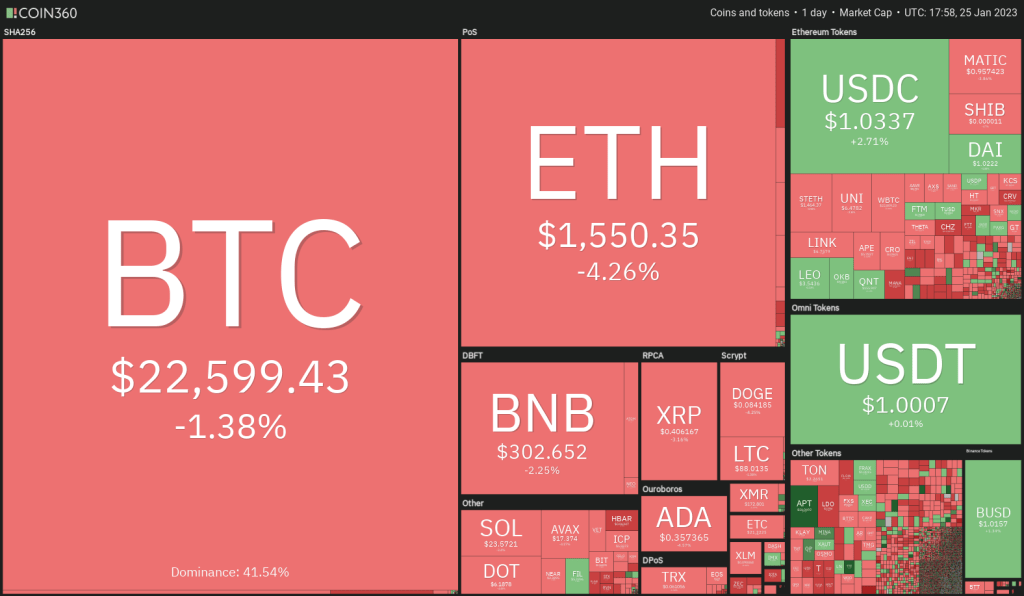 Daily cryptocurrency market performance / Source: Coin360
Daily cryptocurrency market performance / Source: Coin360On the other hand, Cathie Wood, CEO and chief investment officer of ARK Invest, stated in a company video blog on Jan. 23 that crypto assets could witness a big turnaround in 2023 as the Fed returns due to falling inflation.
BTC, ETH, BNB, XRP and ADA analysis
Bitcoin (BTC): Bulls are not willing to surrender
Bitcoin is witnessing a seesaw war around $22,800. The bears want to stop the upward movement at this level, but the bulls are not willing to surrender.
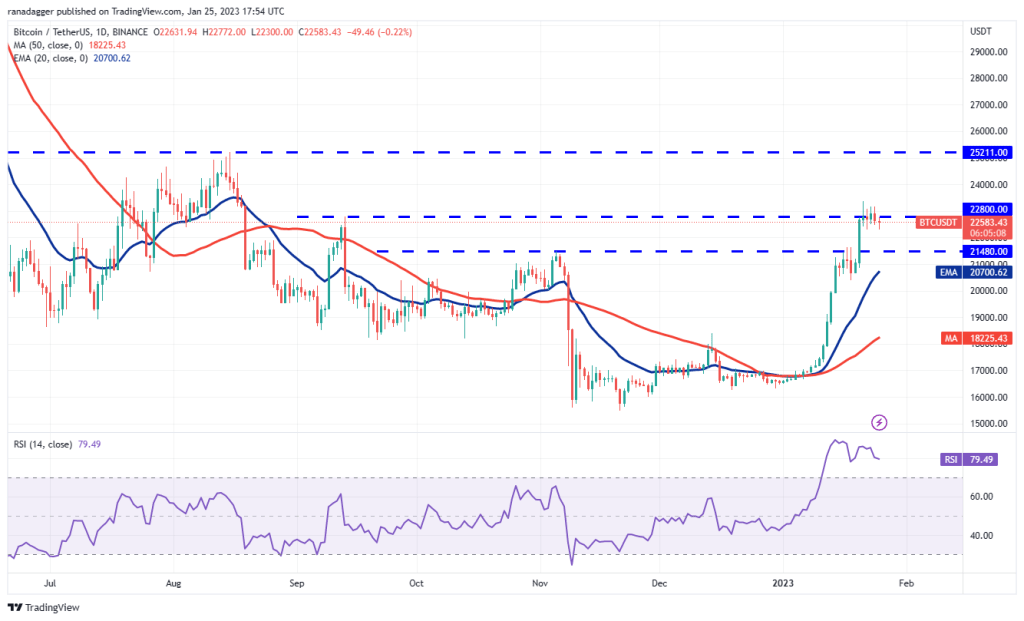
The rising 20-day exponential moving average ($20,700) and the relative strength index (RSI) in the overbought zone suggest that the bulls have the upper hand. Buyers will have to push the price above $23,371 to start the next leg of the rally at $25,211. If the price turns down from the current level and dips below $22.292, it could trigger several short-term traders to stop. This could intensify the selling and BTC could drop to $21,480. If the price bounces back from this level, the bulls will try to continue the upward move again. The short-term trend could decline below $20,400.
Ethereum (ETH): Uncertainty resolved in favor of bears
After forming Doji candlestick patterns on January 22 and 23, ETH fell sharply on January 24. Thus, it showed that the uncertainty was resolved in favor of the bears.
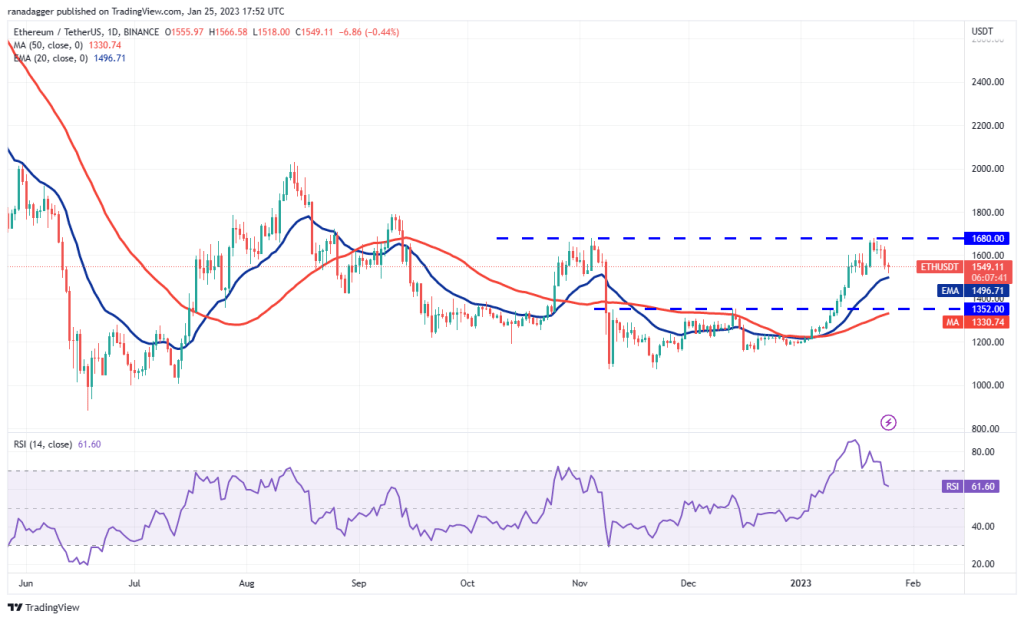
ETH corrected to the 20-day exponential moving average (EMA) at $1,496 on January 25. This is a very important support to follow. If the price bounces off this level, it will indicate that sentiment remains positive and traders are buying near support. ETH could retest the resistance at $1,680 later. A break above this level could mark the start of the next leg of the upward move. ETH could rise to $1,800 first and then skyrocket towards $2,000. This bullish view could be rejected in the short term if the price breaks below the 20-day EMA. ETH could decline to $1,352 later on.
Binance Coin (BNB): Bulls failed to sustain breakout
BNB broke above the upper barrier at $318 on Jan. 24. However, the bulls failed to sustain the breakout, as seen from the long wick on the day’s candlestick.
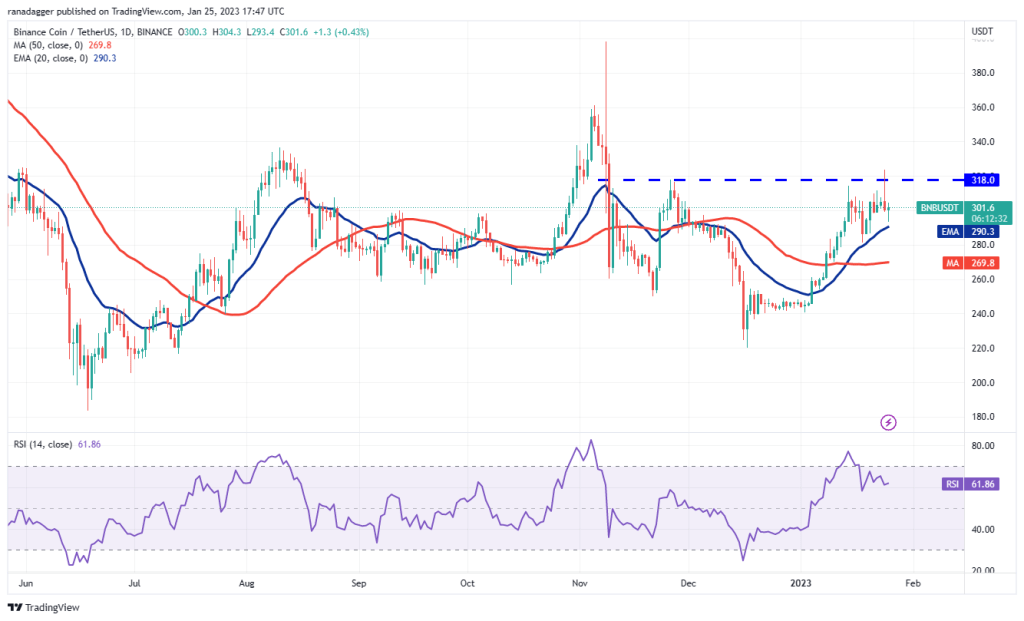
The bulls bought the dip to the 20-day EMA ($290) on Jan. 25, as seen from the long tail on the candlestick. This suggests that BNB could swing between the 20-day EMA and $318 as the bulls and bears try to defend their edge. If the price rises above $318, it will show that the bulls have overpowered the bears. That could skyrocket BNB to $360. Conversely, a collapse below the 20-day EMA could turn the advantage in favor of the bears. BNB could then drop to the 50-day SMA ($270).
Ripple (XRP): The move proved to be a bull trap
XRP broke above the overhead resistance of $0.42 on Jan. 23. But this has proven to be a bull trap. The bears pushed the price below the January 24 breakout level.
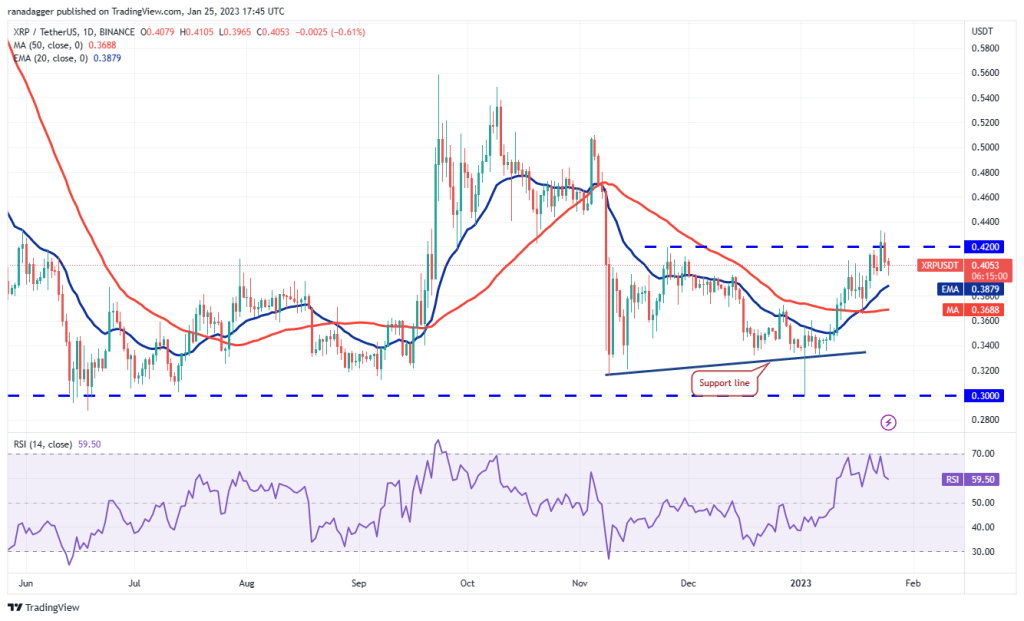
The critical level to watch on the downside is the 20-day EMA ($0.38). If the price bounces back from this support, it will indicate that lower levels continue to attract buyers. The bulls will then try to push the price above the $0.42 to $0.44 zone. If successful, XRP could start a rally towards $0.51. If the bears want to strengthen their position, they will have to push the price below the 20-day EMA. This may encourage short-term traders to take profits. In this case, XRP could drop to the 50-day SMA ($0.37).
Cardano (ADA): Rally looks like it hit a wall
ADA’s rally seems to have hit a wall near $0.38. The bears have repeatedly thwarted the bulls’ attempts to break through this hurdle between January 22 and January 24.
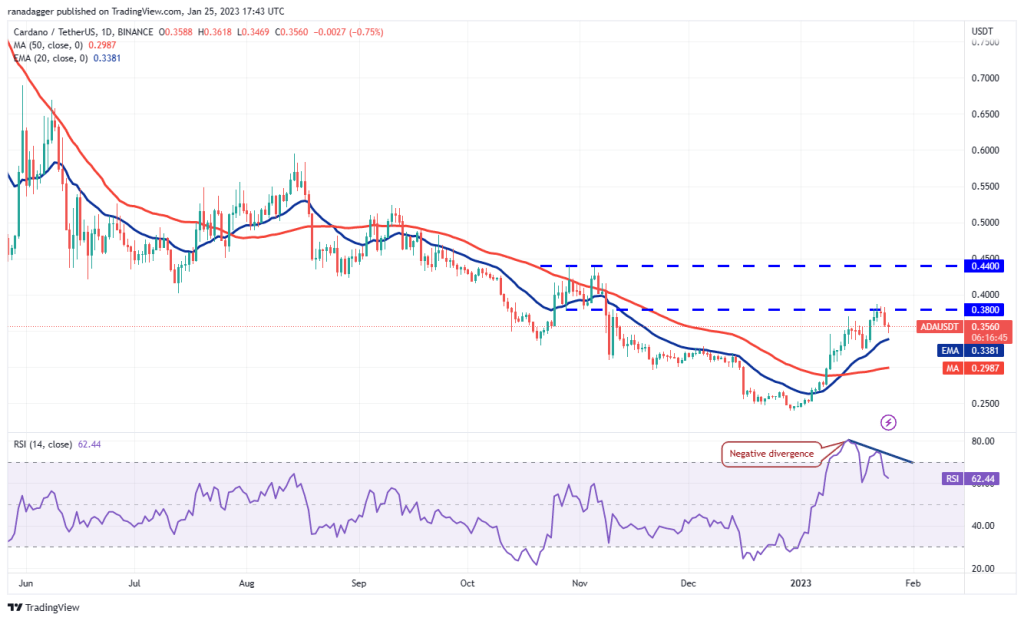
The RSI is showing signs of negative divergence, signaling that the bullish momentum may slow down. Sellers could further strengthen their position if they push and sustain the price below the 20-day EMA ($0.34). ADA could drop to $0.32 and then to the 50-day SMA ($0.30). Alternatively, if the price rises and rises above $0.38, it will eliminate the negative divergence. ADA could then go to $0.44.
DOGE, MATIC, DOT, LTC and AVAX analysis
Dogecoin (DOGE): Facing strong resistance
DOGE is facing a strong resistance at $0.09. The price once again fell from this level and fell to the 20-day EMA ($0.08) on Jan. 24.
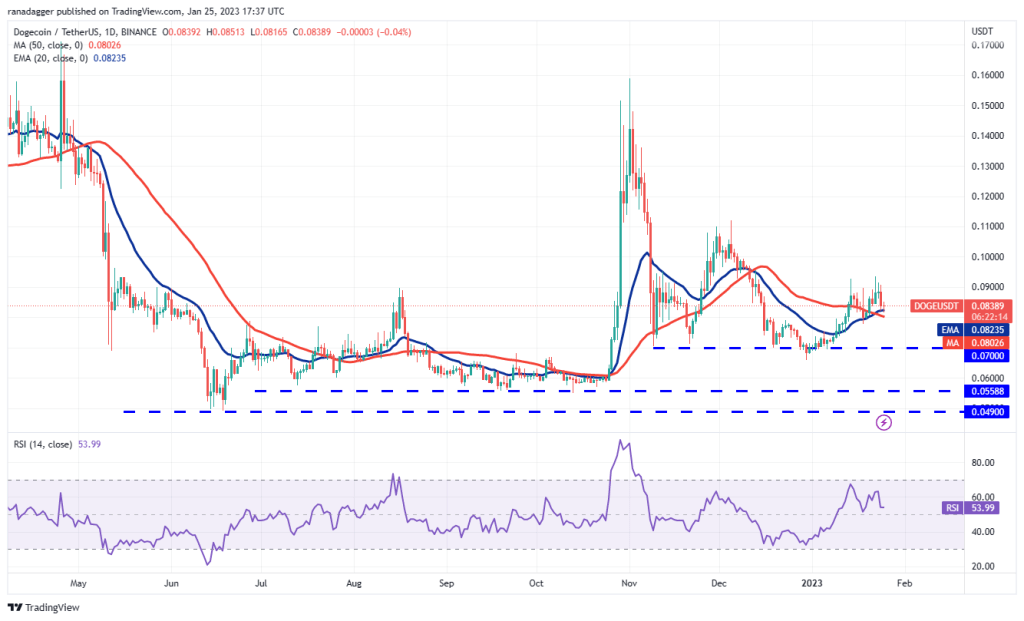
If the price continues to decline and dips below the moving averages, it will suggest that the bulls have lost their grip. DOGE could then extend its stay in the $0.07 to $0.09 range for a few more days. On the contrary, if the bulls want to maintain their advantage, they will have to quickly push the price above $0.09 and sustain it. This could open the doors for the rally to $0.11 which could again act as a formidable resistance.
Polygon (MATIC): Bears output resistant
The bulls again attempted to push the MATIC above the overhead resistance of $1.05 on Jan. 24, but the bears did not budge. This brought the price down to the 20-day EMA ($0.93).
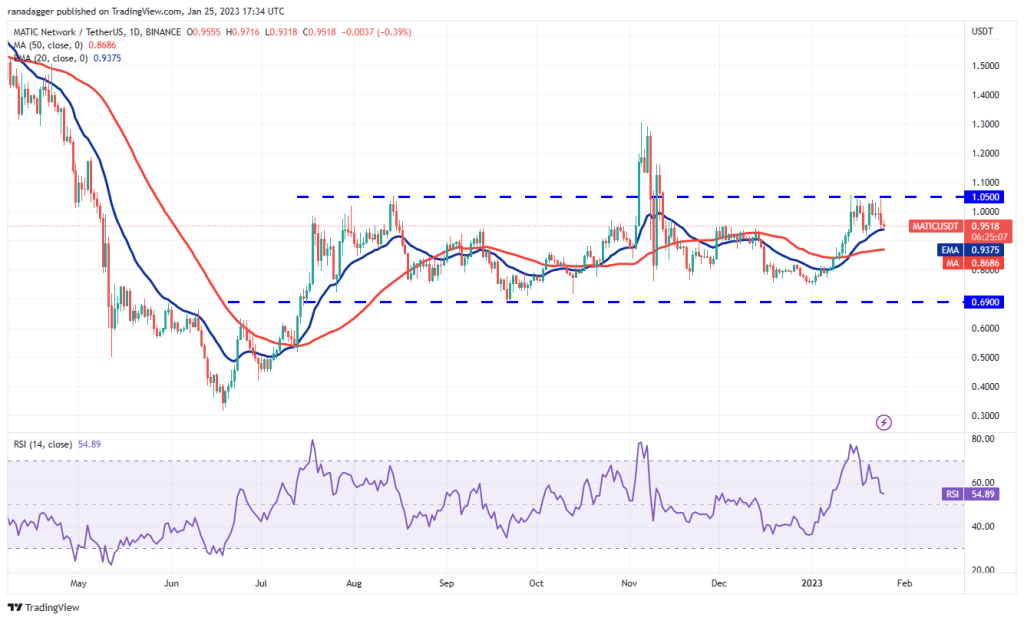
If buyers want to hold the upper hand, they will have to hold the 20-day EMA strongly. MATIC could then rise again to $1.05. Usually, a tight consolidation near a firm overhead resistance dissolves to the upside. If this happens, MATIC could rally to $1.16 and then $1.30. Contrary to this assumption, if the price declines and dips below the 20-day EMA, it indicates that MATIC may be stuck in the $0.69 to $1.05 range for a while.
Litecoin (LTC): In a strong uptrend
LTC is in a strong uptrend. Buyers pushed the price above $93 on Jan. 23, but the bears were selling higher as seen from the long wick on the day’s candlestick.
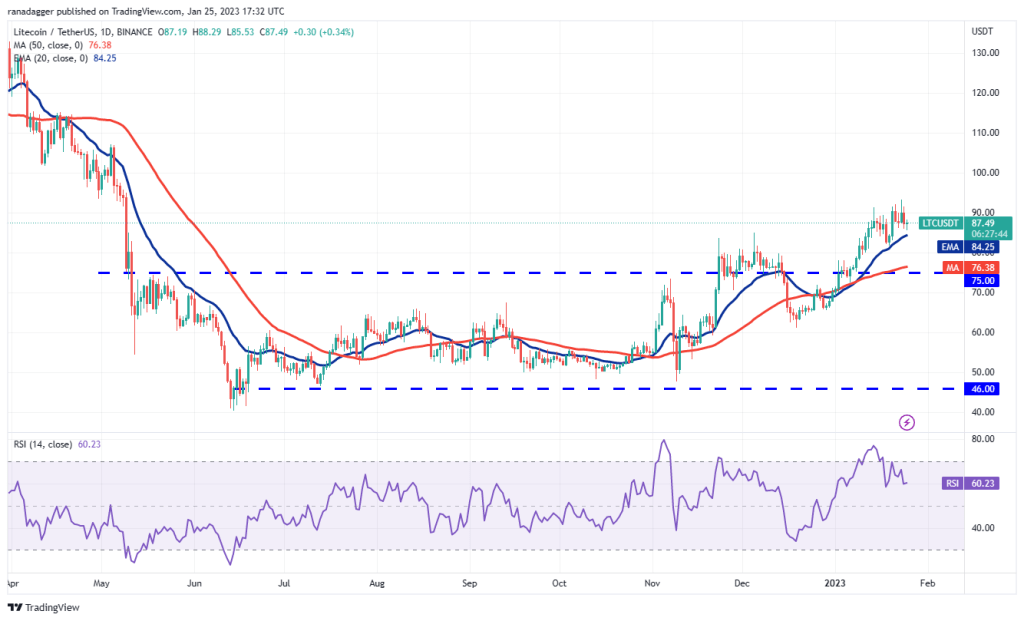
The price has retreated to the 20-day EMA ($84), which is likely to act as a strong support. Buyers will have to push and sustain the price above $92 to signal a resumption of the upward move. LTC could then bounce back to $100 and then to $107. Conversely, if the price breaks down from the current level or overhead resistance and dips below the 20-day EMA, this indicates that traders are recording profits. This could start a correction at the $75 breakout level.
Polkadot (DOT): Bears sell on rallies
The DOT broke above the resistance line on Jan. 23 and Jan. 24, but the bulls were unable to sustain higher levels. This shows that the bears are selling in the rallies.
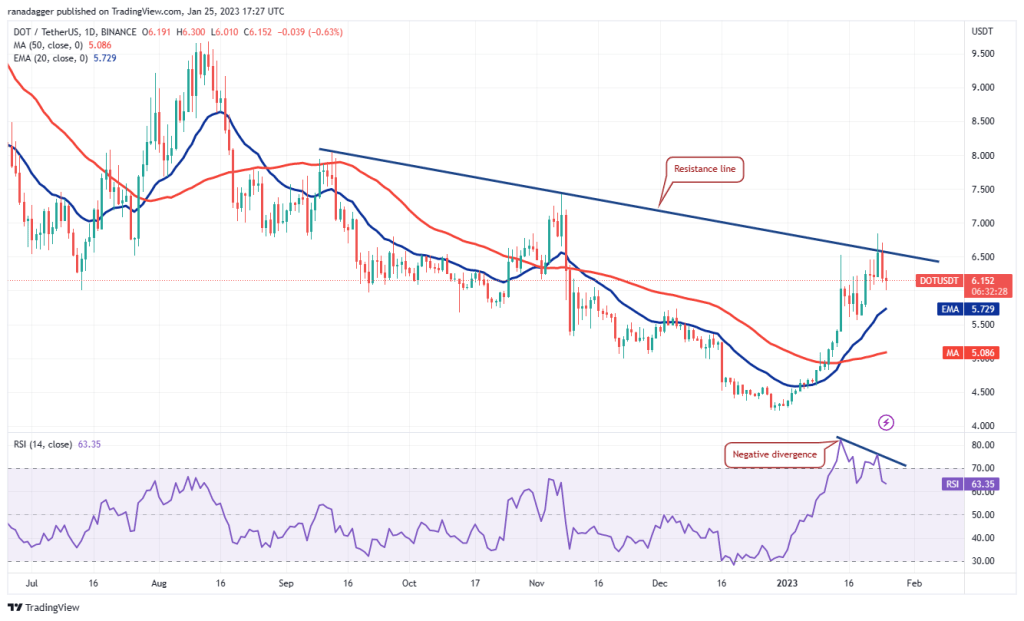
The rising 20-day EMA ($5.73) points to the advantage for buyers, while the negative divergence in the RSI indicates that the bullish momentum may be weakening. If the price bounces back strongly from the 20-day EMA, a break above the resistance line could increase the likelihood. The DOT could then climb to $7.42 and then to $8.05. The bears will gain the upper hand if they push the price below the 20-day EMA. This could start a deeper correction towards $5.50 and below it to the 50-day SMA ($5.08).
Avalanche (AVAX): Bears’ aggressive defense
AVAX bounced back from the resistance line on January 24, showing that the bears are defending this level aggressively.
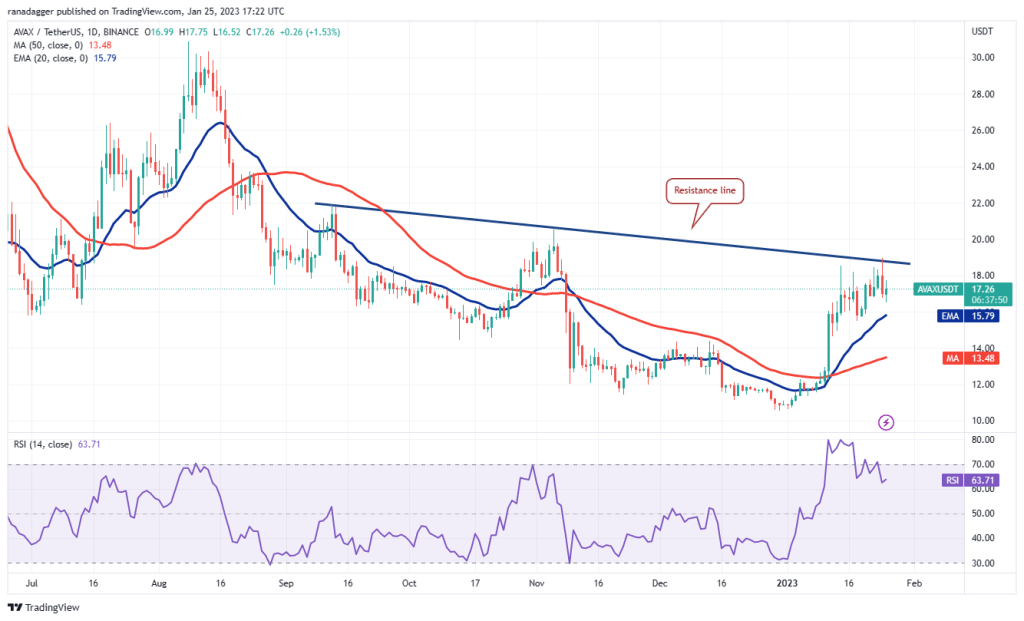
The key support to watch on the downside is the 20-day EMA ($15.79), as bulls are expected to buy dips to this level. If AVAX price bounces back from the 20-day EMA, buyers will again try to break through the general hurdle. If they manage to do so, AVAX could rise to $22 and then to $24. This positive view may be invalidated in the near term if the price declines and dips below the 20-day EMA. AVAX could then drop to the 50-day SMA ($13.48).







